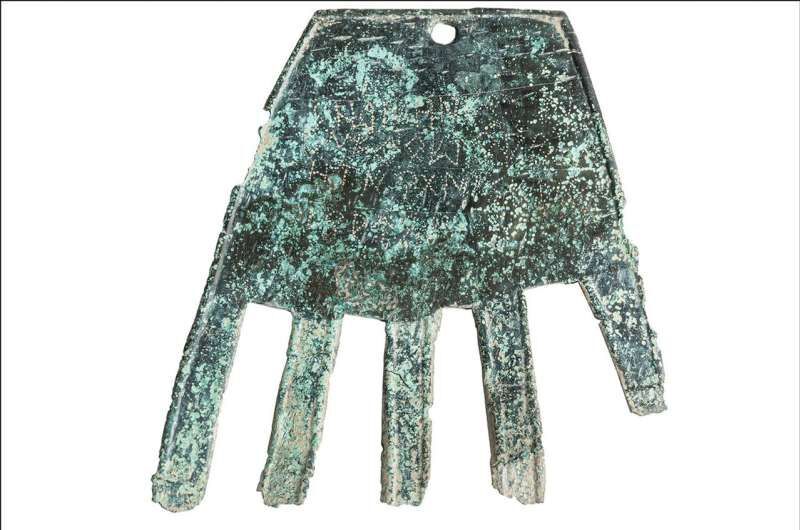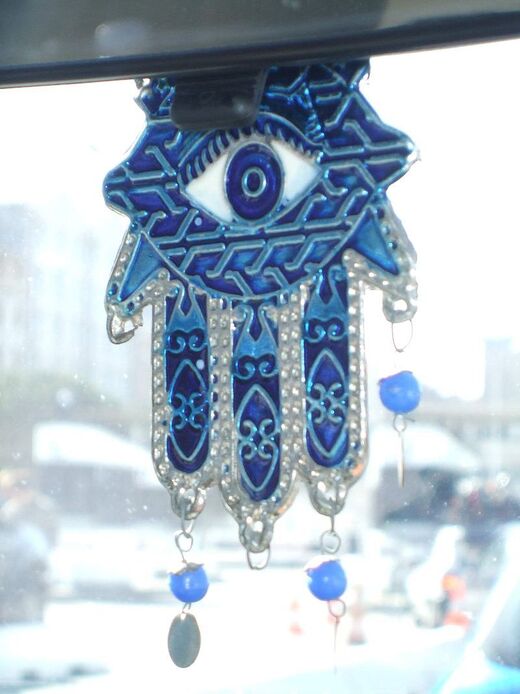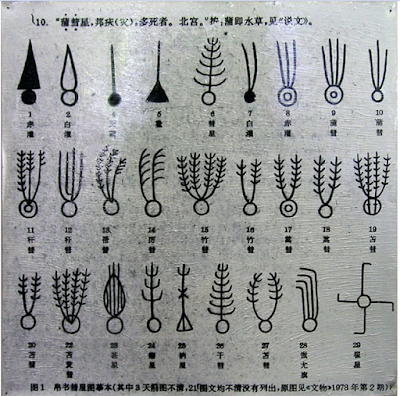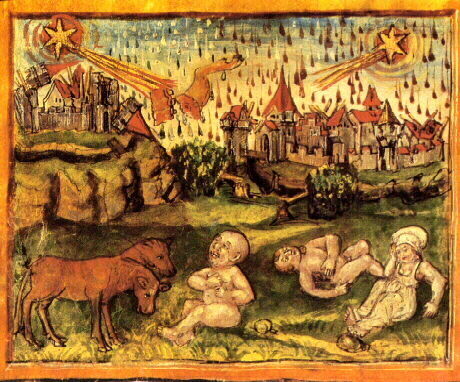
© Antiquity (2024). DOI: 10.15184/aqy.2023.199Photograph of the Irulegi hand and drawing based on the photograph and a scanned image of the hand (figure by authors).
A team of archaeologists with the Aranzadi Science Society has found a word inscribed on an ancient Basque bronze hand that resembles a modern Basque word. Their
paper is published in the journal
Antiquity.
In 2021, a related team of archaeologists working at an Iron Age site called Irulegi, in northern Spain, unearthed a flat piece of bronze shaped like a human hand. After cleaning, they discovered that
a series of words had been inscribed onto its surface representing text from a Vasconic language — one that includes Basque and several others that are now extinct.
In this more recent study, the research team worked to decipher the text. Thus far, they have found that
the first word, if spelled using a Latin alphabet, would be "sorioneke" or "sorioneku" — either of which strongly resembles "zorioneko" — the Basque word for "good fortune."
The Basque people of today are a group that resides in the Basque Country, an autonomous region in Spain situated along the Pyrenees mountains, bordering France.
Basque is the official language of the area, and its persistence has proven to be a puzzle for modern linguistics experts — as one of the last surviving members of the Paleo-European language family, many suggest, it should have disappeared along with most others of its kind after the arrival of Indo-European languages.
The bronze hand has been dated to approximately 2,100 years ago and
the script etched into it now represents its longest example to date — the only other samples have been seen on a few coins. The research team is hoping the continued study of the text will help to better understand the Vasconic language that was spoken at Irulegi — and perhaps its link to modern Basque.
In addition to the text etched onto the hand,
it also had a hole drilled where the palm would have met the wrist, which suggests the hand was meant for hanging. It was found near a door, suggesting it had once hung over the entrance to a room. This, the researchers suggest, hints at the possibility that the hand was used for a ritualist purpose, offering
good fortune to those who entered.
More information: Mattin Aiestaran et al, A Vasconic inscription on a bronze hand: writing and rituality in the Iron Age Irulegi settlement in the Ebro Valley, Antiquity (2024). DOI: 10.15184/aqy.2023.199
Journal information: Antiquity
Comment: Interestingly, it resembles, and holds a similar meaning, to the hamsa, or 'hand of Fatima':
'a palm-shaped amulet popular throughout North Africa and in the Middle East and commonly used in jewellery and wall hangings.[5][6] Depicting the open hand, an image recognized and used as a sign of protection in many times throughout history, the hamsa has been traditionally believed to provide defense against the evil eye.
© CarlesVAA hanging hamsa in Tunisia
Early use of the hamsa could be traced to ancient Mesopotamian artifacts in the amulets of the goddess Inanna or Ishtar.
[...] An 8th-century BCE Israelite tomb containing a hamsa-like hand inscription was discovered at Khirbet el-Qom.[6]
Regarding Ishtar, in
The Seven Destructive Earth Passes of Comet Venus, Pierre Lescaudron highlights the parallels between the goddess and cometary Venus:
Going back to the Middle East, the Mesopotamians paid very special attention to Innana/Ishtar (Venus). It was one of the most venerated deities in the Sumerian pantheon, the most important and widely venerated deity in the Assyrian pantheon.
[...]
Not only was Venus described as a comet by numerous ancient mythologies, but it was considered a destructive one, as depicted in the prayer of lamentation to Ishtar: [...]
And the shape of the hamsa and hand of Irulegi do appear to resemble some old depictions of comets:

© via University of MaineAbove: Comets (‘Huìxīng’) have been observed and recorded in China since the Shang Dynasty (1600-1046 BC). The set of comet illustrations from a silk book (‘Bóshū’) written during the western Han period

Association between comets and plagues
See also:
- Volcanoes, Earthquakes And The 3,600 Year Comet Cycle
- The Golden Age, Psychopathy and the Sixth Extinction
- Meteorites, Asteroids, and Comets: Damages, Disasters, Injuries, Deaths, and Very Close Calls
- 17,000 years ago one of Europe's most ancient domestic dogs lived in the Basque Country
And check out SOTT radio's:
MindMatters: Meaning All the Way Down: The Wonders and Mysteries of Language with Juliana Barembuem








Which, according to modern historians, are a very recent invention, copied by the Northerners (Scandinavians and Germanic tribes) from the much smarter Israelites and Romans. Something seems off here ...